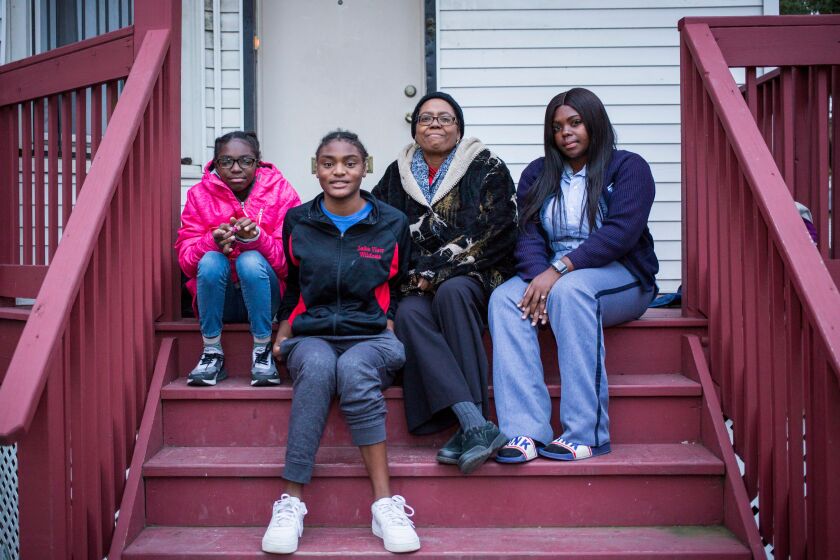Rolinda Robinson has four children, and three have asthma. Her 25-year-old daughter Walkeisha had it worst.
“She was always in and out of the hospital, especially around the time the seasons would change,” says Robinson, a social worker who lives in Austin.
From when Walkeisha was 7 till she was 13, Robinson says they’d go once a month to what was then Cook County Hospital to get medication for her.
Robinson says she’d miss a full day of work because the hospital always pushed back her appointment. “We spent countless hours in that waiting room,” she says. “I couldn’t afford family insurance at the time. And, because I was working, I was earning too much to qualify for a medical card.”
Robinson says she has taken Walkeisha and her younger siblings Brijah, 12, and Ladeja, 16, to the emergency room at least 50 times because of an asthma attack.
“It’s something else to see your child not be able to breathe,” she says.
African-American children in Chicago suffer much higher rates of asthma than white and Latino kids do and are more likely to end up in a hospital or die from asthma-related symptoms.
And those, like Robinson, who live in predominantly minority neighborhoods on the West Side and South Side have the most exposure to air pollution, a new National Resources Defense Council study finds. Toxic air pollutants such as ozone and benzene often trigger or worsen asthma symptoms, especially in children.
Matt Siemer, executive director of Mobile Care Chicago, goes to West Side and South Side neighborhoods to provide no-cost asthma treatment, mostly to poor children of color. Siemer has asthma himself.
“It’s incredible how my asthma symptoms act up differently across town,” he says. “If I’m downtown, I can walk around fairly easily. But in Altgeld Gardens, the walk from my car to one of our health vans is enough to get me [coughing.]”
An estimated 85,000 children in Cook County have asthma, according to an analysis of U.S. Census Bureau data by the American Lung Association. Of those, more than 50,000 are enrolled in Chicago Public Schools, according to Dr. Anna Volerman, a University of Chicago Medicine professor whose research focuses on asthma in minority communities.
There’s no cure for asthma, though deaths are relatively rare. It’s estimated that about 4,000 sufferers nationwide die each year. Many of those deaths are believed to be preventable with proper treatment and care.
Researchers measure asthma’s impact based on things like missed school days and emergency hospital visits due to symptoms.
A 2013 study found that black children in Chicago are eight times more likely to die from asthma than white kids and 10 times more likely to end up at an emergency room.
A review of hospital discharge data by the Respiratory Health Association published in May found that 8,848 children in Chicago went to emergency departments for asthma symptoms in 2015, 63 percent of them were black, 22.5 percent Hispanic and 6 percent white.
That was down from 9,702 emergency visits in 2009. But Joel Africk, president of the association and co-author of the study, attributes that to a decline since 2010 in the African-American population in Cook County, which has fallen by about 61,000.
“We were encouraged when we saw the overall number of child emergency visits for asthma-related symptoms were down,” Africk says. “But the more we looked at the data, we found the drop was mostly due to the decline in the black population.”
Robinson isn’t planning on leaving Chicago anytime soon, but she’d like to see policymakers take asthma more seriously.
“There needs to be an effort to address asthma on a community level. Otherwise, things aren’t going to change,” she said.
READ MORE
• In Chicago, pollution hits West Side, South Side the hardest, study finds





